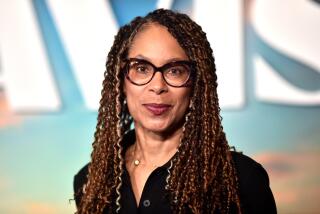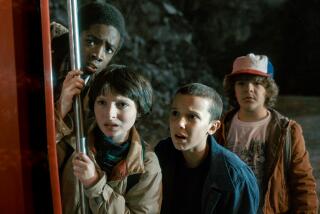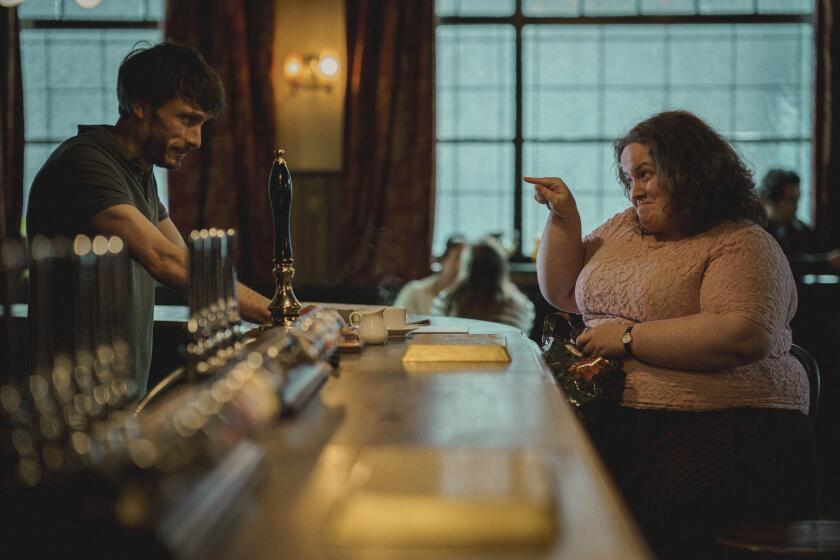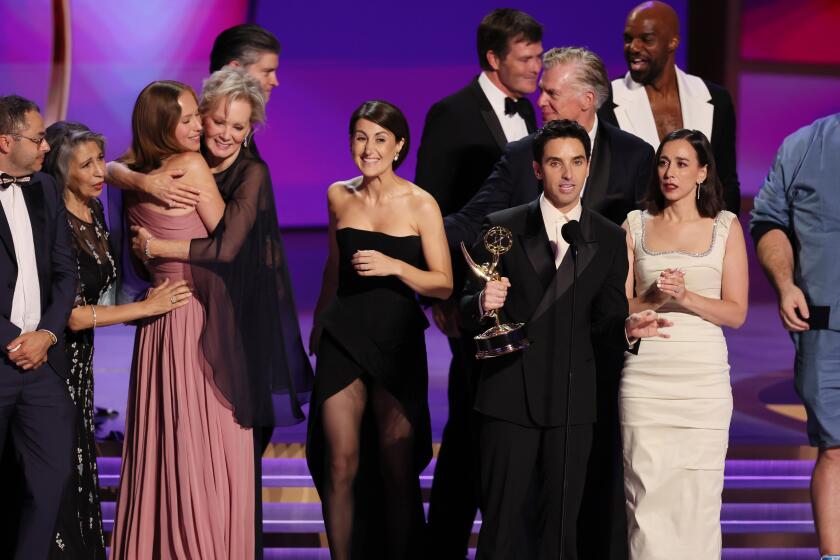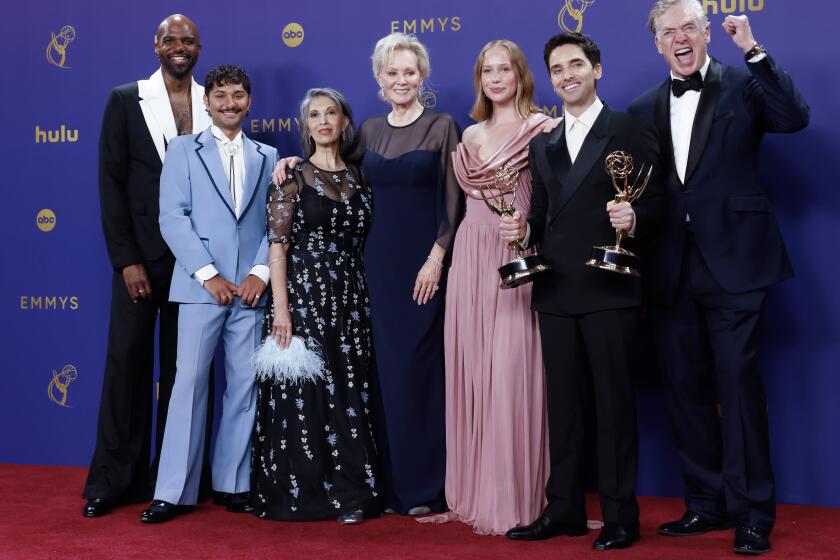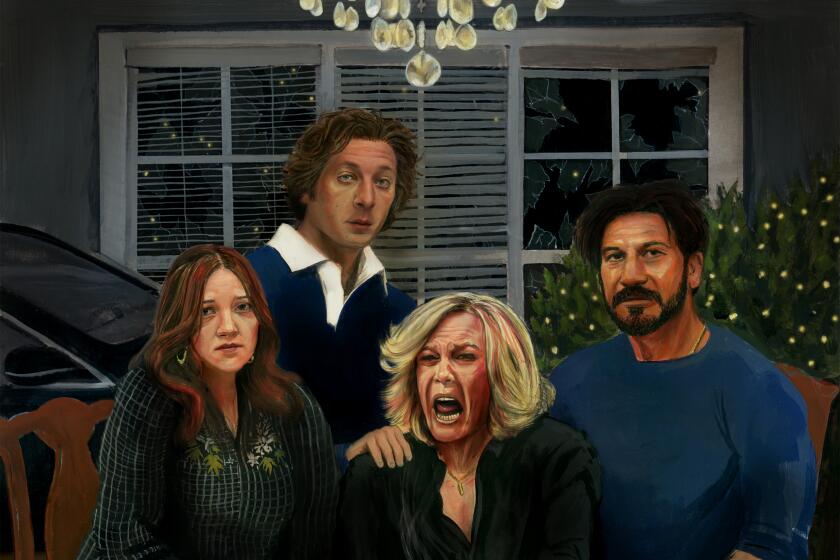Amazon joins Netflix in raising the TV stakes

TV is not in Kansas anymore. Just like Dorothy, Hollywood has found itself in a magical new land. The industry’s warm embrace of subscription video services is being driven by several factors: technology, money, creative freedom and critical acclaim.
During the last two years, two technology companies -- Netflix and Amazon.com -- have disrupted the established TV industry by turning themselves into prime destinations for some of the entertainment industries’ most successful creators.
Amazon on Tuesday made a surprising announcement that it would team up with Woody Allen, who plans to write and direct a new TV series for Amazon’s subscription service. The company’s news came less than 48 hours after Amazon became the first streaming service to win a Golden Globe for best television series with its half-hour dramedy “Transparent.”
“The stuff that I’ve been watching lately has been on these [streaming services] like Amazon Prime where I used to go to get my toilet paper,” actress Edie Falco, the star of Showtime’s “Nurse Jackie” who came to prominence in HBO’s “The Sopranos,” told reporters this week.
During Sunday’s Golden Globes, Amazon and Netflix edged out TV heavyweights including HBO in major award categories. Netflix saw “House of Cards” leading man Kevin Spacey triumph over the likes of James Spader and Dominic West, while Amazon’s “Transparent” patriarch Jeffrey Tambor edged out folks including Rickey Gervais and Louis C.K.
Subscription video-on-demand services, known in the industry as SVOD, has an appealing choice for some of Hollywood’s top talent because of the creative freedom it affords without sacrificing the TV-sized budget.
“Amazon has incredibly deep pockets,” said Jeffrey Cole, director of the Center for the Digital Future at USC’s Annenberg School. “This shows that they are serious players with serious money.”
A wave of new destinations for original programming is not a new phenomenon to television. Before becoming dominant destinations for quality TV, basic cable channels and premium cable channels were repositories for reruns of TV shows and films before expanding into original content.
“Every pay TV-service has used the same playbook. They start by playing other people’s content and then they move into creating original content,” Cole said. He added, though, that the window in reaching legitimacy has been condensed significantly. “Amazon has moved it into hyper-speed,” he said.
After helping put FX on the map and contributing to the rise in stature of basic cable,” veteran TV producer Shawn Ryan is seeing if he can find success in the next frontier.
“We knew there’d be some freedom in jumping into their pool,” said Ryan, creator of one of “The Shield,” one of the first basic-cable dramas to earn widespread critical acclaim.
“We’ve reached a state where serialized shows are the most desired form of storytelling, where binging is sought out,” Ryan said Tuesday in a telephone interview with The Times.
“And platforms like Amazon and Netflix have become a one-stop shop for that,” he said. “So bypassing all the roadblocks is, of course, desirable.”
His adaptation of British-import “Mad Dogs” was originally planned for FX but is now part of Amazon’s latest batch of pilots that will hit the site Thursday.
Another reason for the allure: Shows do not have to deliver blockbuster numbers like they do in ad-supported outlets, namely network and cable TV.
“They want to make unique things that stand out, that take risks and that get people talking,” Ryan said. “They don’t want 60% of people warmly liking something. They want the 20% that can’t help but keep watching even when they should be doing something else.”
Roy Price, vice president of Amazon Studios, underscored the value in practicing that strategy during an interview with The Times late last year.
“Every show has to be somebody’s favorite show,” he said. “This creates a lot of opportunity for creators, this creates an opportunity for show runners that didn’t exist before. Now they can tell complex and interesting stories … and the audiences are responding.”
Staff writer Meg James contributed to this report.
Twitter: @villarrealy
More to Read
From the Oscars to the Emmys.
Get the Envelope newsletter for exclusive awards season coverage, behind-the-scenes stories from the Envelope podcast and columnist Glenn Whipp’s must-read analysis.
You may occasionally receive promotional content from the Los Angeles Times.
